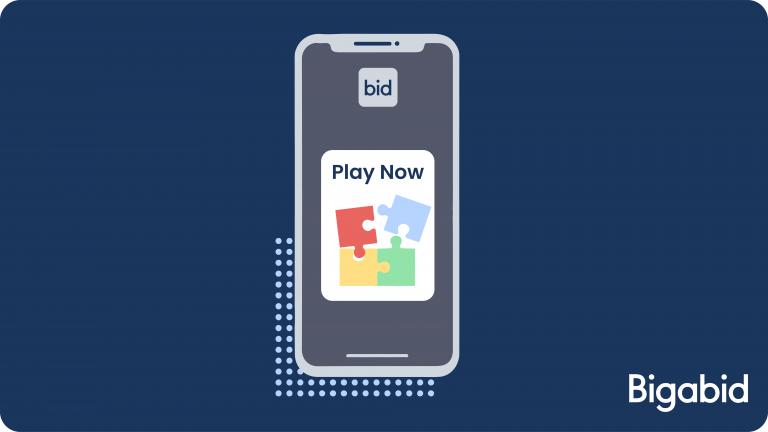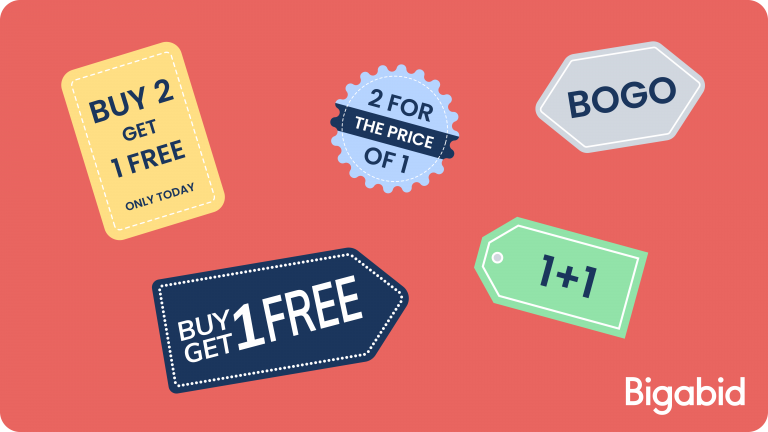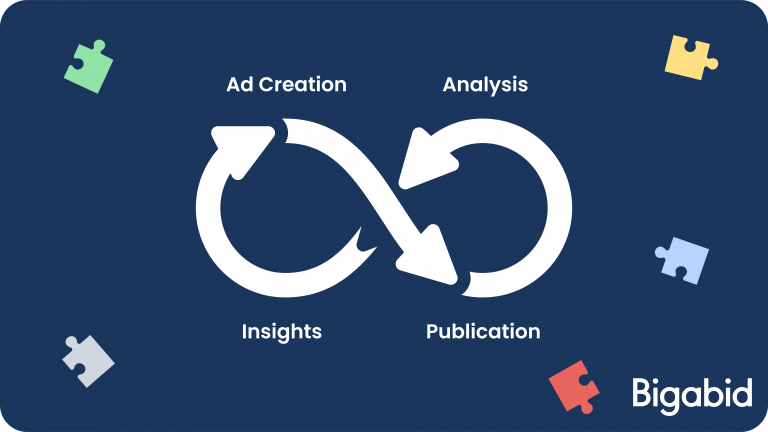Creative Personalization
By Bigabid’s Creative Team
“If you choose to look at your ad’s “creative” just as design, you choose to ignore a huge range of creative tools that can dramatically improve your ad’s performance.“
Creative Personalization
By Bigabid’s Creative Team
The Holy Grail of Creative Personalization
Personalized ads are not new. The concept of targeting users based on interest, context, and behavior with relevant creatives was proven to be effective a long time ago. So… what’s the big news here?
The news is that we made it to the next level. Technology, data science, and creative can now be executed at a much higher resolution (user-level granularity) with much better accuracy, all while bidding for the best price in real-time, and even on massive scales.
For this to happen, we need amazingly fast technology – to identify the user and serve them with the right ad at the right time, a wide range of different creatives to choose from, and the machine learning infrastructure to learn from the outcome of the ad being served.
However, there is one thing that many agencies and app developers miss– they process and learn from millions of users, but use a very limited range of creatives.
The Most-Ignored Part of ML-Based Personalization
Let’s take Spotify for example. Its advanced algorithm is learning each and every user’s behavior and non-behaviors e.g. –
What did the user search for? Which songs do they fully listen to?
Which ones do they skip?, and at what point exactly? Who are the artists?
What’s the genre? Is it a song or an instrumental piece? What about the lyrics?
Writers? Language? Texture? Minor? Major? The song’s theme? Time of day? Tempo?
Is this the first time they are listening to this track or the 197th? What was the previous track? What was the next? What can we learn from past behaviors? Where can we see a pattern? What do we do about the millions of other people with similar behaviors?
And so on…
Spotify uses these variables – and thousands of others – to predict the best next-song recommendation for this specific user. We do a similar thing (in different methods) when we use machine learning algorithms to serve the right ad, at the right time, at the right price, on the right platform, and app, to get the most likely action we want from a specific user.
But that is only a part of the story…
Spotify uses an ever-growing, gigantic collection of content– over 70 million music tracks! The algorithms analyze and learn about the content as much or more as they learn about their users. They break every song to labeled pieces of data that describe every musical aspect one can think of.
Now how effective do you think Spotify would be if it only had 2-20 songs to serve its audiences? Or only an Alternative Rock music collection to offer its users? Not nearly as effective.
This is also true for effective ad-personalization systems. You must have a huge, diverse content catalog (AKA ads) to maximize the power of the algorithms you run.
This part of the story is missed by many publishers, agencies, and app developers. They use a very limited set of ads. When you have a very limited data set, your performance is very limited. It is exactly like trying to personalize the music experience for millions of users with a limited music catalog.
This is why Bigabid has developed such a unique approach. We create, produce, and run a massive collection of ad creatives. We integrate different concepts, wording, web-psychology insights, design patterns, and many more elements. All creatives are labeled and analyzed, so the system can serve a specific user, in a specific context, in real-time, the highest-action-probability ad. We also learn from each of these ad-servings, whether it produced an action or a non-action, and therefore, learn a little more on both the user and the specific creative. This allows us to truly personalize the user experience by serving the right ad to the right person in the right mindset at the right time for the right price. Ultimately… the right price for the right person equals the right ROAS for our clients.

Leveraging the True Power of Creative
Let’s begin with defining what is “creative”. In many agencies, “creative” means design. But creative is so much more. It includes everything that is behind and within the ad from strategy, digital-psychology triggers, messaging, call to actions, the ad’s UX, graphic design, video, music, and many more aspects. Behind every ad, there are dozens of decisions… only part of them is graphic design related.
If you choose to look at your ad’s “creative” just as design, you choose to ignore a huge range of creative tools that can dramatically improve your ad’s performance. Here is a quick example with a simple sales promotion like a 1+1 that can be worded in different ways like below-

Each alternative can be crafted using 3-4 different psychological triggers, different audiences and different apps etc. Then each version can be designed, creating another set of variations with different images, CTA’s, layouts, colors, fonts, and more. The result is over 100 different creatives with different designs powered by strategic, creative thinking that is far beyond graphic design approaches. Finally, if we include different use contexts like user acquisition or retargeting we add another element.
Discover how Creative Personalization is implemented in The 4 Pillars for Successful Retargeting.
Closing the Cycle with Data Science and Analysis
Creative is not only a product, it’s a process. Like our Spotify example, we would want to label each creative (“song”) with as many variables as we can, so we can then analyze its performance and generate insights for our next set of ads. A creative that cannot produce insights is a waste of money in the world of performance-based creative.
Data-science tools and analysis are for creative performance like radar is for airplanes. You send a signal (creative) from the transmitter (ad-serving system) to the target (user) and get the returning feed to the receiver (database), which is then processed to show you the results. With analysis, you can understand these results in a way that enables you to navigate (modify the creative) towards the direction you desire. This same type of repeating process enables us to navigate our creatives to the right places. See below, with the methodological cycle of: Ad-Creation > Publication > Analysis > Insights, we can create an ever-growing spiral of optimized creatives, which is the fuel for the main personalized ad-serving system.

Adding the Secret Sauce
With all the amazing development of ML, we tend to forget how important the human factor is in this process. Of course, creativity obviously includes the creative talents of our clients, our creative team, and the positive interaction between them. But the real magic happens when you include creatives that are not a part of the creative team’s head-count. The data scientists, analysts, campaign managers, customer success managers, marketers, and developers who offer insights, concepts, and ideas that are priceless. Moreover, unlike technology, this cannot be duplicated. This is a result of organizational culture, recruitment strategies, and a lot of daily interactions between diverse talents.
At Bigabid, we invite all of our employees to add to our creative engine. With transparency running through our core, we openly share their insights with our creative team’s insights, and share those insights with our client’s to constantly fuel the creative process.
Read more about our Partnering with Transparency approach here.
When we add our transparent, creative process to an openness to develop massive amounts of creatives and relevant data using highly sophisticated real-time machine learning we get creative personalization with a powerful edge. We invite you to be part of this exciting process, or even just to share your ideas about creative personalization. Please click the “contact us” button below.